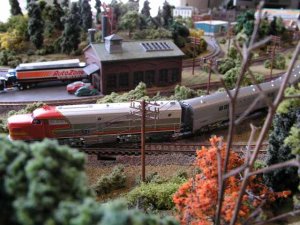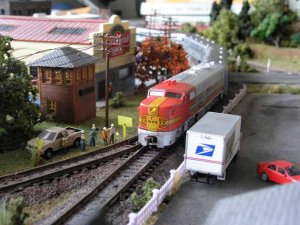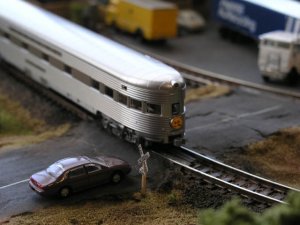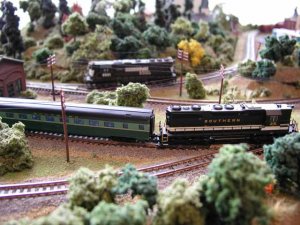I haven't been able to find this answer out yet so I'm hoping you guys can fill in the informational gaps.
Let me keep this in context too...Several PA's are being restored around the country - one specifically will be in the Santa Fe red warbonnet colors for the Smithsonian. So in honor of a great looking diesel, I'm creating an excursion train that would run today (as if the Smithsonian would actually let someone use a museum exhibit) which gives license to do about whatever I want, but I'm curious what amount of total power I need to be somewhat realistic.
As I've posted pictures of, I'm building the Super Chief using a PA1 instead of the normal F-units. My question is this...in several pictures I noticed that two "A" units would be paired with a "B" unit (the back of the "A" units connecting to the "B" unit). Did passenger trains of the Super Chief type (long haul across various terrain features) pulling 12 or more cars, require tractive/braking power from the extra "A" and "B" units or a power boost to the electrical/HVAC units to service the passengers orboth? (Forgive the ignorance on exactly how a diesel sends its electrical power to each passenger car - I'm assuming it creates then sends the electrical power to power the HVAC units/kitchen/lights via a parallel circuit. But just how much power is required I don't know. I promise to get a good book on just how diesels work...but for now...does anyone know?
Let me keep this in context too...Several PA's are being restored around the country - one specifically will be in the Santa Fe red warbonnet colors for the Smithsonian. So in honor of a great looking diesel, I'm creating an excursion train that would run today (as if the Smithsonian would actually let someone use a museum exhibit) which gives license to do about whatever I want, but I'm curious what amount of total power I need to be somewhat realistic.
As I've posted pictures of, I'm building the Super Chief using a PA1 instead of the normal F-units. My question is this...in several pictures I noticed that two "A" units would be paired with a "B" unit (the back of the "A" units connecting to the "B" unit). Did passenger trains of the Super Chief type (long haul across various terrain features) pulling 12 or more cars, require tractive/braking power from the extra "A" and "B" units or a power boost to the electrical/HVAC units to service the passengers orboth? (Forgive the ignorance on exactly how a diesel sends its electrical power to each passenger car - I'm assuming it creates then sends the electrical power to power the HVAC units/kitchen/lights via a parallel circuit. But just how much power is required I don't know. I promise to get a good book on just how diesels work...but for now...does anyone know?





